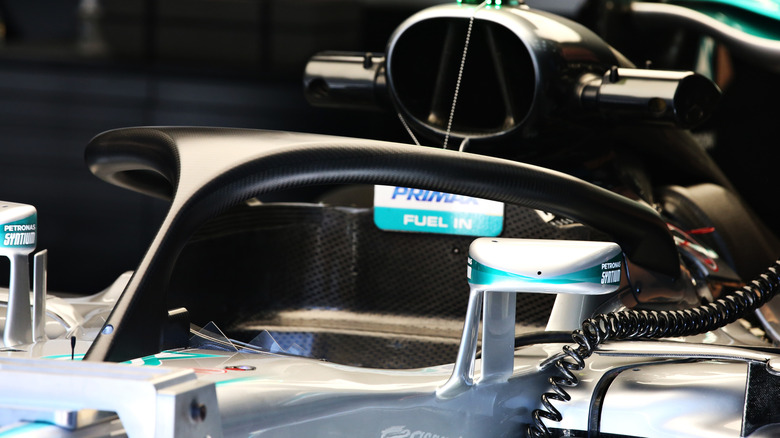What's the Purpose Behind F1 Cars' Jagged Windshields?

The Hidden Purpose of the Jagged Windscreen on Modern Formula 1 Cars
If you've ever looked closely at a modern Formula 1 car, you might have noticed a small, translucent windscreen with a row of jagged teeth along its edge. At first glance, it might seem like an afterthought or even a quirky design choice. But this seemingly simple component plays a surprisingly complex and crucial role in the performance of the car.
While one might assume that the purpose of this windscreen is simply to protect the driver from wind resistance, its function extends far beyond driver comfort. In fact, the serrated edges are part of a carefully engineered aerodynamic strategy aimed at optimizing airflow across the entire vehicle.
How the Windscreen Affects Airflow
On the surface, a smooth-edged windscreen would appear to be sufficient — redirecting air up and over the cockpit. However, this would create a large, turbulent vortex directly behind the driver’s head. Such turbulence can disrupt the flow of air to critical components at the rear of the car, including the engine intakes and the rear wing.
This is where the jagged edges come into play. By introducing small, controlled disruptions to the airflow, these serrations break up the large vortex into multiple smaller vortices. These mini-tornadoes are not only more predictable but also allow for a smoother transition of air toward the back of the car. As a result, the engine receives better airflow, which translates into improved power output, while the rear wing benefits from cleaner, more consistent air, increasing downforce.
Computational fluid dynamics (CFD) studies have confirmed that the zigzag pattern of these edges enhances turbulence in a way that ultimately improves aerodynamic efficiency. It's a paradoxical concept — using chaos to create order — but one that makes perfect sense in the high-stakes world of F1 engineering.
The Halo Effect: Why F1 Needed This Innovation
The need for such a specialized windscreen didn't arise out of thin air. It was, in fact, a direct consequence of another major change in F1 design: the introduction of the Halo in 2018. This titanium safety device, designed to protect drivers from debris and impacts, fundamentally altered the airflow over the cockpit.
Before the Halo became standard, F1 teams explored alternatives, including Red Bull’s Aeroscreen concept — a fully enclosed canopy similar to what is now used in IndyCar. Ultimately, F1 chose to retain the open-cockpit aesthetic by adopting the Halo instead. While this decision preserved the traditional look and feel of F1 cars, it introduced new aerodynamic challenges.
With the Halo disrupting airflow in a completely new way, teams had to adapt. The jagged windscreen emerged as a clever solution — a lightweight, low-impact component that helps manage the altered airflow patterns caused by the Halo. It’s a textbook example of how F1 engineers tackle problems through marginal gains: small, targeted changes that add up to significant performance improvements.
Engineering Excellence in a Tiny Package
What makes this innovation so remarkable is its simplicity. The jagged windscreen is a low-cost, lightweight solution to a complex aerodynamic problem. It perfectly encapsulates the philosophy that drives Formula 1: no detail is too small, and every gram of weight, every millisecond of drag, matters.
In essence, this tiny piece of plastic isn’t just about protecting the driver from the wind — it’s a precision-engineered tool that actively contributes to the car’s speed and stability. It may look like a child’s craft project, but make no mistake: it’s the product of millions of dollars in research, countless hours in wind tunnels, and some of the sharpest minds in motorsport engineering.
So next time you see those little serrated teeth perched at the front of an F1 cockpit, remember — they’re not just for show. They're doing serious work, slicing and dicing the air to help the car go faster, lap after lap.
Post a Comment for "What's the Purpose Behind F1 Cars' Jagged Windshields?"
Post a Comment